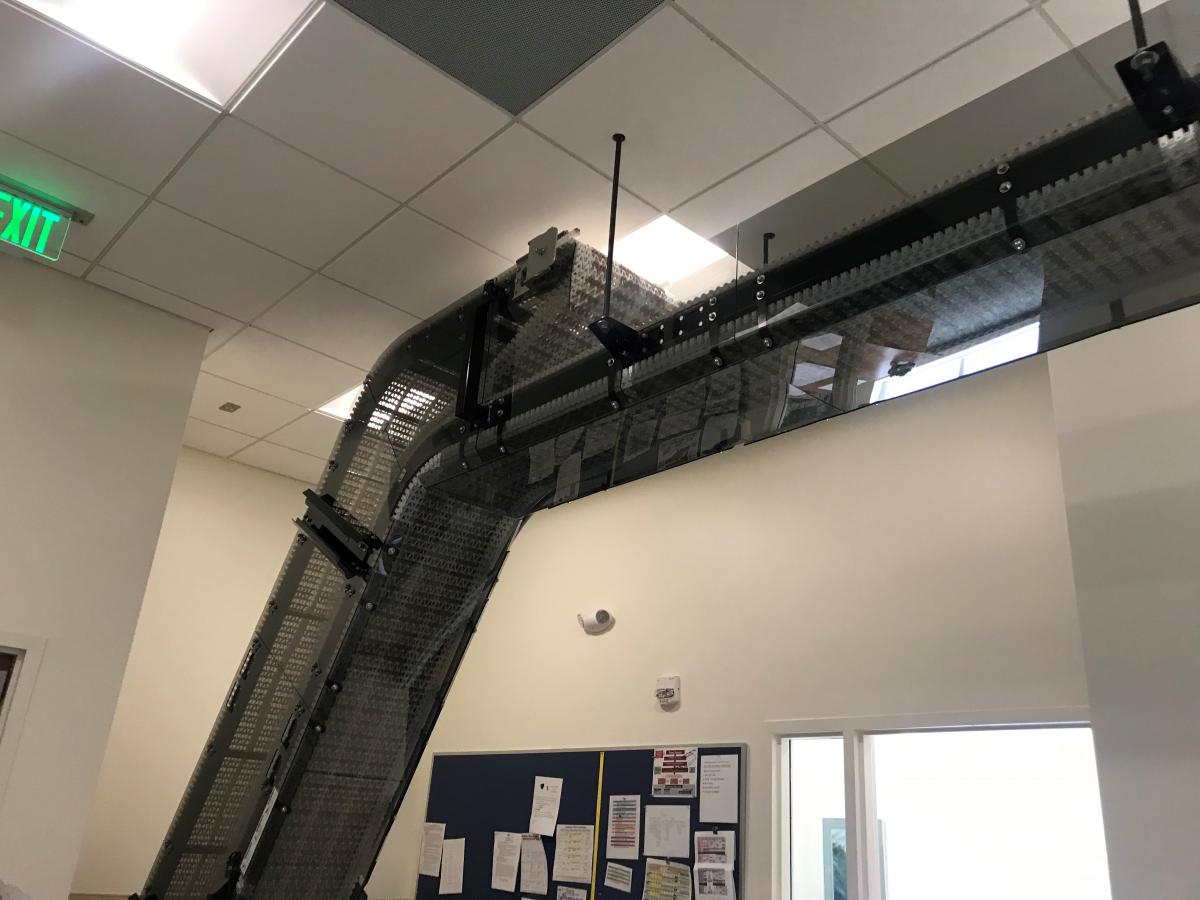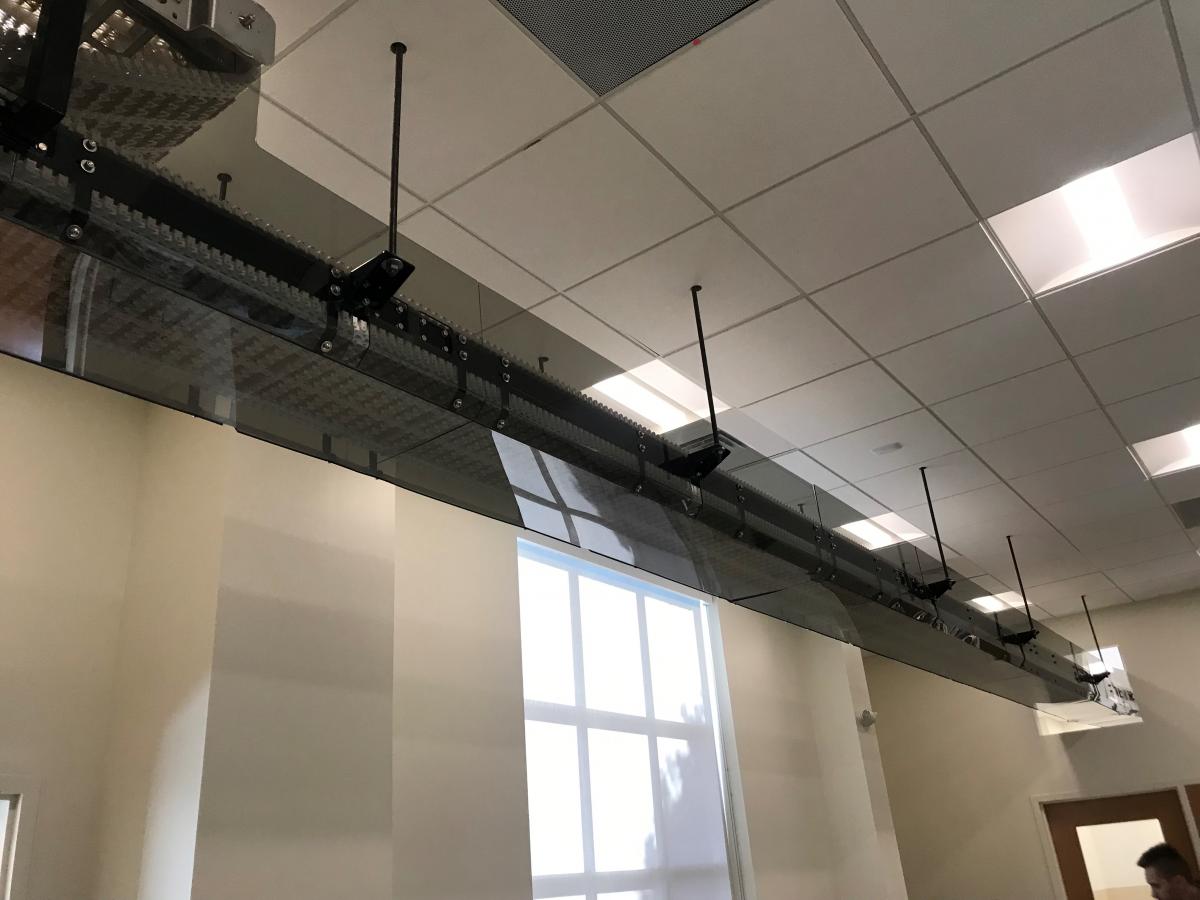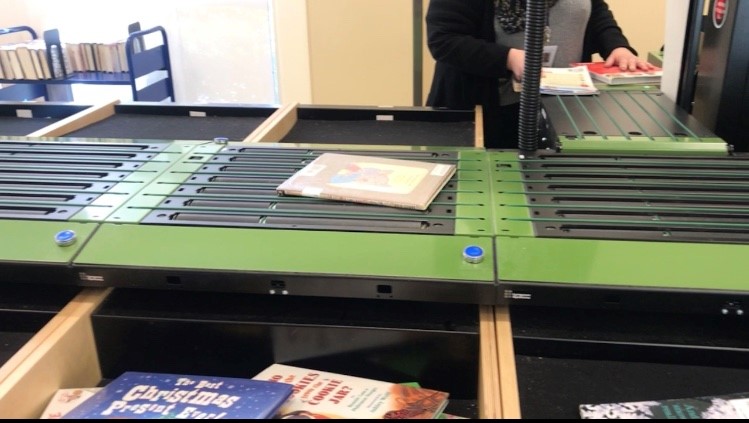Inside look: Morrison Regional Library’s (very cool) book conveyor belt
January 4, 2019
Drop your book or materials inside the return slot at Morrison Regional Library and listen.
You’ll hear the chugging whir of the conveyor belt that, behind the materials drop, propels the item up a steep ascent like a roller coaster on its way back to a sorting bin where the circulation team will then either put the book, DVD or other item back onto the shelves or reroute to another Library location in the system.
The whirring comes from the Automated Material Handling (AMH) system, a state-of-the-art conveyor belt and sorting system, just like the ones you may see at Amazon distribution centers.
“Kids like to put their books in the slot, and then they can hear the conveyor belt start,” said Tara Flanagan, circulation manager at the Morrison Regional Library location. “It’s fascinating for them, especially if they see their own book coming back and being sorted.”
The AMH system was up and running at the Morrison location in April 2018, a few months after the renovated Library re-opened to the public. The glances through the book drop and ears pressed against the wall to listen combined with the AMH created a better and more interesting Library for both customers and staff.
“It lets staff be on the floor with the public more since we don’t have to be at the desk scanning every single book and then sorting it ourselves,” Flanagan said.
As of December 2018, the machine has moved and sorted more than 270,000 books.
Here’s how the machine works:
After a customer drops a book or item in the slot at Morrison Regional Library, the item travels up the machine, sandwiched between two moving, interlocking moving belts. 
Once it reaches the top, the item travels through a small hole in the wall and moves across the top of the Library’s circulation room before it travels back down on the conveyor belt for sorting.
This, Flanagan said, is where the technology really kicks in.
Once materials reach the sorter, the machine moves each item, one-by-one, up one more, short, conveyor belt, the machine clicking all the way as it moves the materials. The item then runs under a scanner that immediately ‘reads’ a special tag inside the item. The material then gets passed on over several rolling assembly line surfaces and sorted into genre-specific bins or Library locations if it’s going out into the system-wide circulation.
 Each item is tagged with a Radio Frequency Identification (RFID) that allows the automated system to check in, check out and securely track library materials. Because it’s based on radiowave technology, it doesn’t require line-of-sight. Unlike barcodes, which must be scanned one a time, multiple RFID-tagged items can be set on an RFID pad and checked in or checked out. Customers at Morrison can experience this during the self check-out process. It’s not usual to see children or adults placing stacks of books on the RFID pad and immediately have their materials all checked out.
Each item is tagged with a Radio Frequency Identification (RFID) that allows the automated system to check in, check out and securely track library materials. Because it’s based on radiowave technology, it doesn’t require line-of-sight. Unlike barcodes, which must be scanned one a time, multiple RFID-tagged items can be set on an RFID pad and checked in or checked out. Customers at Morrison can experience this during the self check-out process. It’s not usual to see children or adults placing stacks of books on the RFID pad and immediately have their materials all checked out.
“I think it’s kind of hypnotic, watching it. It’s just so cool,” she said. “I love the robotic aspect of it.”
While Library staff still must physically put the materials on the shelf, the time it takes after items are sorted is significantly less. That frees up time for staff to create book displays, assist customers in person and plan programs to help make the Library experience even better.

The AMH and RFID technology is making the Library cooler on its own, Flanagan said. She gives tours of the conveyor belt to field trips and to the extra curious child who wants to see his or her book go on its journey back to the shelf.
Of course, it’s not just children who are interested in the machine.
“We let grown-ups look too,” Flanagan said.
Charlotte Mecklenburg Library is working to install AMH across all Library locations.
